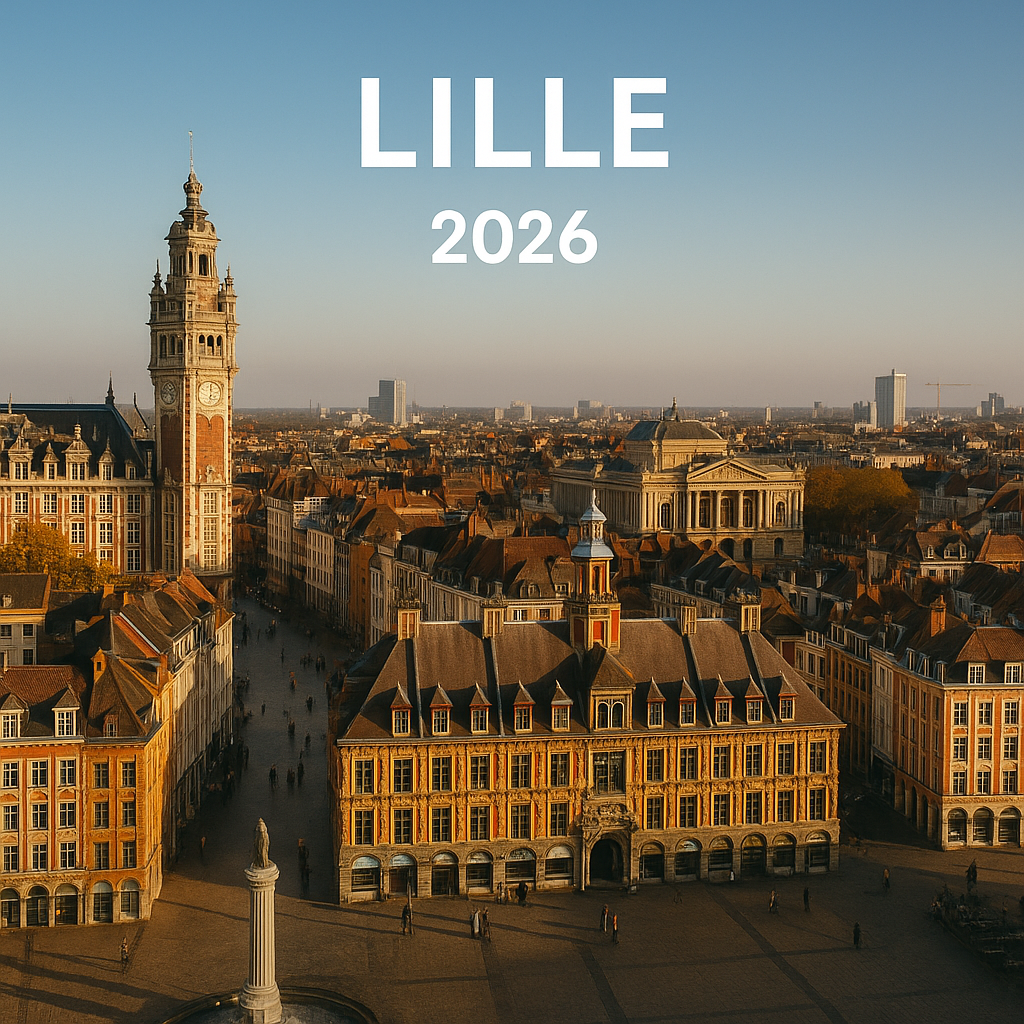In 2025 the major cities of Eastern Europe, Budapest, Bucharest, Warsaw, Prague, and Riga, are rewriting the rules of urban living. These metropolises are investing in sustainable transport networks and nurturing a vibrant do‑it‑yourself (DIY) culture. Citizens and entrepreneurs collaborate to build community workshops where people repair bicycles, convert buses into mobile coworking spaces, and design creative solutions for everyday needs. The synergy between transport and DIY culture is not merely a trend; it’s a response to the challenges of urbanisation and climate change.
Public authorities have launched ambitious programs to expand tram lines, create bicycle highways and electrify bus fleets. At the same time, local associations are teaching residents to maintain their vehicles and craft home equipment from recycled materials. The idea of mobility is merging with the notion of making: people who design and build their own tools also think differently about how they move through the city. This blending of disciplines encourages self‑reliance and fosters resilience.
Public authorities have launched ambitious programs to expand tram lines, create bicycle highways and electrify bus fleets. At the same time, local associations are teaching residents to maintain their vehicles and craft home equipment from recycled materials. The idea of mobility is merging with the notion of making: people who design and build their own tools also think differently about how they move through the city. This blending of disciplines encourages self‑reliance and fosters resilience.
Online platforms like Askaide support this shift by connecting individuals who need help with those who have skills to offer. For example, through the platform’s DIY services category people can find experienced handymen to customise bikes or build shelves. Similarly, the transport category allows neighbours to share rides, carpool or offer van services for moving furniture. On busy evenings families find reliable caregivers via the household help section, allowing them to attend a workshop or volunteer at a community garden.
In Bucharest, the city has converted unused industrial warehouses into maker labs. Here hobbyists collaborate with engineers to design modular bus stops, solar‑powered chargers and portable food stalls. Projects often start informally, with groups of friends building prototypes in garages. Once tested and refined, these ideas spread across neighbourhoods thanks to bike messengers and community radio. The result is a network of small‑scale innovations that collectively reshape the urban landscape.
Warsaw’s famous Praga district has become a hub for participatory urbanism. Residents build planters from wooden pallets, repair benches, and share tools at community libraries. People take pride in restoring old tram cars and turning them into cafés or pop‑up libraries. Their actions demonstrate that a city can be both dynamic and rooted in tradition. The interplay of transport and DIY fosters civic engagement and ownership over public space.
These cities also recognise that education is key. Workshops on bicycle mechanics, carpentry, electronics and urban farming are held in schools, libraries and parks. The integration of practical skills into educational curricula ensures that the next generation values craftsmanship and sustainability. Local governments partner with cooperatives to offer apprenticeships, bridging gaps between formal training and real‑world projects.
The private sector has not been left behind. Start‑ups are designing modular electric scooters, adaptable cargo bikes and compact e‑vans that individuals can assemble at home using kits. Entrepreneurs host hackathons to encourage creative transport solutions. At these events, designers build prototypes that integrate sensors, open‑source software and reclaimed materials. Some of these concepts transition into businesses, while others remain community projects shared freely across networks.
Do‑it‑yourself projects also support social inclusion. Community garages provide safe spaces where women, seniors and people with disabilities can learn to repair wheelchairs, build ramps and modify bicycles. These initiatives bridge social divides and demonstrate the potential of inclusive innovation. When citizens feel empowered to shape their environment, they become more invested in the wellbeing of their neighbours.
The environmental benefits are significant. By designing and repairing products locally, residents reduce waste and extend the lifespan of materials. Sustainable transport systems reduce greenhouse‑gas emissions and decrease noise pollution. The combination of DIY ethics and green mobility contributes to healthier, more resilient cities. Eastern Europe’s metropolises are becoming incubators for grassroots solutions that can inspire other regions.
In 2025, Eastern Europe’s innovation lies not just in large infrastructure projects but in thousands of smaller acts of creativity and collaboration. From hand‑built cargo bikes to open‑source software controlling trams, these efforts reimagine how cities function. Platforms such as Askaide, with its categories spanning childcare, gardening and well‑being, help sustain this movement by making it easy to exchange services and build trust within communities. The future of urban life is taking shape in workshops and
bricolage, transport, household help. An exploration of how Eastern Europe's major cities in 2025 combine sustainable transport with DIY culture, featuring community workshops, mobility innovations and the role of Askaide to connect citizens.transport-diy-eastern-cities-2025 on bike lanes across the East, proving that transport and DIY together can drive meaningful change.
In Bucharest, the city has converted unused industrial warehouses into maker labs. Here hobbyists collaborate with engineers to design modular bus stops, solar‑powered chargers and portable food stalls. Projects often start informally, with groups of friends building prototypes in garages. Once tested and refined, these ideas spread across neighbourhoods thanks to bike messengers and community radio. The result is a network of small‑scale innovations that collectively reshape the urban landscape.
Warsaw’s famous Praga district has become a hub for participatory urbanism. Residents build planters from wooden pallets, repair benches, and share tools at community libraries. People take pride in restoring old tram cars and turning them into cafés or pop‑up libraries. Their actions demonstrate that a city can be both dynamic and rooted in tradition. The interplay of transport and DIY fosters civic engagement and ownership over public space.
These cities also recognise that education is key. Workshops on bicycle mechanics, carpentry, electronics and urban farming are held in schools, libraries and parks. The integration of practical skills into educational curricula ensures that the next generation values craftsmanship and sustainability. Local governments partner with cooperatives to offer apprenticeships, bridging gaps between formal training and real‑world projects.
The private sector has not been left behind. Start‑ups are designing modular electric scooters, adaptable cargo bikes and compact e‑vans that individuals can assemble at home using kits. Entrepreneurs host hackathons to encourage creative transport solutions. At these events, designers build prototypes that integrate sensors, open‑source software and reclaimed materials. Some of these concepts transition into businesses, while others remain community projects shared freely across networks.
Do‑it‑yourself projects also support social inclusion. Community garages provide safe spaces where women, seniors and people with disabilities can learn to repair wheelchairs, build ramps and modify bicycles. These initiatives bridge social divides and demonstrate the potential of inclusive innovation. When citizens feel empowered to shape their environment, they become more invested in the wellbeing of their neighbours.
The environmental benefits are significant. By designing and repairing products locally, residents reduce waste and extend the lifespan of materials. Sustainable transport systems reduce greenhouse‑gas emissions and decrease noise pollution. The combination of DIY ethics and green mobility contributes to healthier, more resilient cities. Eastern Europe’s metropolises are becoming incubators for grassroots solutions that can inspire other regions.
In 2025, Eastern Europe’s innovation lies not just in large infrastructure projects but in thousands of smaller acts of creativity and collaboration. From hand‑built cargo bikes to open‑source software controlling trams, these efforts reimagine how cities function. Platforms such as Askaide, with its categories spanning childcare, gardening and well‑being, help sustain this movement by making it easy to exchange services and build trust within communities. The future of urban life is taking shape in workshops and
bricolage, transport, household help. An exploration of how Eastern Europe's major cities in 2025 combine sustainable transport with DIY culture, featuring community workshops, mobility innovations and the role of Askaide to connect citizens.transport-diy-eastern-cities-2025 on bike lanes across the East, proving that transport and DIY together can drive meaningful change.






